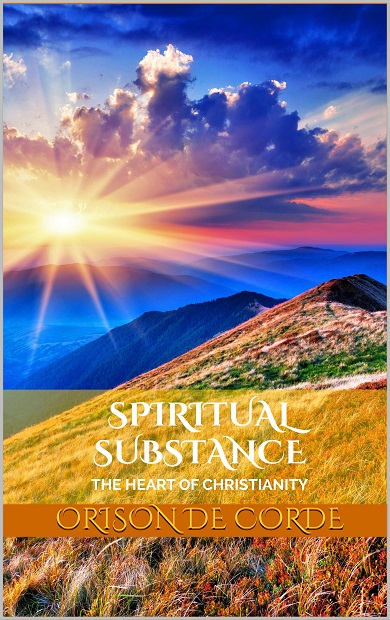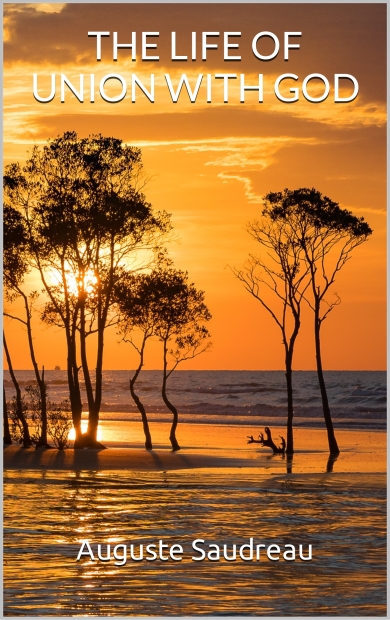| Table of Contents |
Introduction
Introduction
“Create in me a clean heart, O God, and renew within me a right spirit.” (Psalms 51:10) “Re-creation” is the work of the Holy Spirit. “Come, Holy Spirit, fill the hearts of your faithful, and kindle in them the Fire of your Love. Send forth your Spirit and they shall be created, and you will renew the face of the earth.” (Veni Sancte Spiritus) As the world was created in stages with ascending levels of nature, so too, are we re-created in stages with ascending levels of supernatural nature or grace. We go from acting like animals following our feelings much of the time, to behaving like human beings following our human reason more or less of the time, to living like the Son of God, Christ Jesus, following the Holy Spirit more and more of the time.
Adam and Eve were both created in the image and likeness of God; in the image of God, because they had a spiritual soul with intellect and free will, and in the likeness of God, because their soul was full of grace (God’s presence). (Genesis 1:26) They lost the likeness, but kept the image, when they fell from grace. As we grow in grace we are re-created, more and more, in the likeness of God. Our part is to cooperate with God in this work of re-creation by cleaning up our way of loving. “First clean the inside of the cup and of the plate, then the outside will become clean as well.” (Matt. 23:26) First clean up your “cup” (the thoughts of your mind) and your “plate” (the desires of your heart), and then your whole life will become more free of sin, more clean and holy.
The chapters in the first two parts of this book follow the classical pattern of spiritual growth in the Christian life with its three stages or ages—beginner, proficient and perfect, and two parts or periods—ascetical and mystical. They reflect the experience of growing up in the Lord, of the life of Christ—the mystery of grace—unfolding in the soul more and more as we draw closer to God in the spiritual life. The ascetical life of beginners in the spiritual life corresponds to the First Part of The Spiritual Life — The Life and Death of Christ. The mystical life of spiritual proficients and those perfect in love corresponds to the Second Part of The Spiritual Life — The Resurrection and Ascension of Christ.
These two parts or periods of the spiritual life are not entirely distinct or separate. The self-discipline and self-denial of the ascetical life continues throughout the spiritual life, though it becomes much more deep, interior and inspired by grace in the mystical/contemplative life. Infused contemplation replaces discursive meditation, but rarely all at once or entirely. Only gradually, as the life of grace permeates the entire being of a person, will they be able to let go and let God take over their prayer life—“Be still and know that I am God.” (Psalms 46:10) Consequently, according to St. John of the Cross, “Until the soul reaches this state of union of love (perfect love in the transforming union), she should practice love in both the active and contemplative life.” (The Spiritual Canticle) Every Christian runs in the way of God’s commandments when their heart is enlarged by the love of the Holy Spirit, but “each runs along, according to the kind of spirit and state of life God gives, with many differences of spiritual practices and works.” (Psalms 119:32)(St. John of the Cross) “Yet,” the saint continues, “once she arrives (at union with God), she should not become involved in other works and exterior exercises that might be of the slightest hindrance to the attentiveness of love toward God (in contemplation).” “Mary has chosen the best part, and it shall not be taken away from her.” (Luke 10:42) It is true that everyone who seeks to fulfill God’s will has chosen the “best part” in their regard and will receive a special grace for their particular state in life or vocation. Yet, in itself, the grace of infused contemplation is the “best part,” because this interior spiritual activity, whether or not combined with external works, is the most fruitful supernaturally for the salvation of souls and the glory of God. “For a little of this pure love is more precious to God and the soul and more beneficial to the Church (and all people of good will), even though it seems one is doing nothing, than all these other works put together.” (St. John of the Cross, The Spiritual Canticle) “After all, this love (of God) is the end for which we were created.” (Ibid.)
Unlike human development which is a more or less straight line progression from immaturity to maturity through three general stages or ages—childhood, adolescence, and adulthood—spiritual growth is an ascending spiral of consolation and desolation, death and resurrection, with three full circles—beginner, proficient, and perfect—each one begun by its own conversion, all the while turning away progressively from our fallen nature to a higher life in Christ. Herein we see the mystery, majesty and beauty of the spiritual life as well as the mystical meaning of the Mass. (Eph. 3:14-21)
“I am the Way, the Truth, and the Life.” (John 14:6) The spiritual life is the life of Jesus Christ. We will experience what He did in our own way today as we grow in grace and union with God through Christ our Lord. One important way in which we live and receive the life of Jesus Christ is in the Sacred Liturgy of the Mass throughout the liturgical year. From time to time, you will see the sacred liturgy rise from the background to reveal itself in relation to the three conversions of the spiritual life. The first conversion is from Advent to Christmas. The second conversion is from Lent to Easter. The third conversion is from Ascension Thursday to Pentecost Sunday. The one life of Jesus Christ is for us three conversions, three deaths and resurrections, three periods of painful labor and rebirth, three times to grow up in God—each time on a deeper and higher level of love and spiritual life.
These three conversions are three different baptisms. The first conversion-baptism relates to the baptism of Christ in the Jordan River. (Matt. 3:13-17) The second conversion-baptism relates to the crucifixion of Christ on the cross. (Luke 12:50) The third conversion-baptism relates to the outpouring of the Holy Spirit on Pentecost in the “rush of a powerful wind” and “divided tongues of fire.” (Acts 1:5, 2:1-4, 2:31-33) All three of these conversion-baptisms are indicated in the following verse of Sacred Scripture, “This is the one who came by water and blood, Jesus Christ, not by water only (1), but by water and blood (2), with the Spirit as another witness (3),—that Christ is the truth.” (1 John 5:6)
Lyrics & Lessons of Love (APPENDIX I) is a combination of poems and proverbs about the spiritual life. Both the poetry and the Lessons of Love or “sayings of light” flow from the lowest to the highest in the spiritual life.
The Seven Sacraments (APPENDIX II) is a short summary of their origin in the life of Christ and reference in Sacred Scripture. The sacraments are, for Catholics, intrinsic to the spiritual life. They give us grace to follow in the footsteps of our Savior and to grow in union with God, especially in the Holy Eucharist (Holy Communion) where we receive the Risen Lord Jesus Christ, though hidden from our eyes, and the Sacrament of Confession where our sin is forgiven.
“If anyone loves me he will keep my word, and my Father will love him, and we will come to him and make our home with him.” (John 14:23) If we love Jesus Christ we will fulfill His will, and then, He will enter in. The universal “sacrament” for all souls is the will of God. “Not everyone who says to me, ‘Lord, Lord,’ will enter the kingdom of heaven, but only the one who does the will of my Father who is in heaven.” (Matt. 7:21) When we do the will of God we receive grace (God’s Life and Love) by that activity and God’s mercy. It may simply be the right thought or desire, or letting go of our thoughts and desires, except the desire to please Him, and allowing God to do whatever He wants to with us. The will of God can be any activity that is in harmony with the love of God and neighbor. It is never sin, which is selfish and self-centered. “You will know them by their fruits.” (Matt. 7:16) What does the activity produce—spiritual life or spiritual death, virtue or vice, “the fruit of the Spirit” or “the works of the flesh?” (Gal. 5:19-23)
The Spiritual Life (APPENDIX III) is divided into three sections. The first section, Some Notes, fills in some gaps about the spiritual life that were not previously covered in the book. The second section, A Journey, Battle or Relationship, gives a simple summary of the spiritual life as seen from each of these three viewpoints. The third section, The Three Ages, goes over, in short order, the same spiritual journey as the first two parts of the book, but it only covers some of the main characteristics of the spiritual journey to holiness and union with God.
The Way of Christ (SUPPLEMENT ONE) gives you a simple, yet truly effective, way to pray. Follow “The Way” today! When you “Ask God the Father to take your will” and to give you “His will in return” in The Four Step Prayer, you are not asking God to remove your free will, but to take and receive your love, your heart, and to give you His love, which is His will for you, in return. It is similar to the spiritual language found in this passage of Sacred Scripture—“I will take from you your heart of stone, and I will give you a heart of flesh.” (Ezekiel 36:26) Here, the Lord God, through the prophet Ezekiel, is not saying that He will physically remove our heart and give us a new heart, but that He will spiritually remove our hardness of heart and give us His meekness and humility. In other words, He will convert our hard heart which is stubborn, proud, angry and rebellious into a meek and humble heart which is open, loving and obedient to God.
The spiritual offering of The Four Step Prayer corresponds to the sacramental offering of the Holy Sacrifice of the Mass as can be seen in the “Prayer over the Offerings” for the Twelfth Sunday in Ordinary Time—“Receive, O Lord, the sacrifice of conciliation and praise and grant that, cleansed by its action, we may make offering of a heart pleasing to you. Through Christ our Lord.”
The Way of Christ recommends that you “repeat these steps as many times during the day or night as is necessary in order to keep yourself in a right relationship with God.” Our Lord and Savior repeated His prayer three times in the Garden of Gethsemane. “Leaving them again, he went away and prayed for the third time, saying the same words.” (Matt. 26:44) What was this prayer of Christ to His heavenly Father? Essentially, it was The Four Step Prayer. “He went a little further and fell to the ground, with his face touching the earth, and prayed, ‘Father, if you are willing, take this cup away from me; still, not my will, but your will be done.’” (Matt. 26:39, Luke 22:42) This prayer is the heart of the “Our Father” (“The Lord’s Prayer”). All prayer is reducible to the “Our Father,” and the “Our Father” is reducible to— “Thy will be done.” It is the one prayer necessary—“Yes, Lord, Your will be done.” Following the example of Jesus Christ, it would be good to repeat The Four Step Prayer two or even three times, especially at the start of your day, in order to help open your soul more fully to God’s will and grace, His love and life, unless once is enough. If you would prefer, instead of starting over each time, simply, but sincerely, add (once or twice) at the end of the first time—“Please take my will, Heavenly Father. Please grant me Your will in return.”—thus repeating the equivalent of—“Father, … not my will, but your will be done.” (Luke 22:42)
Beyond the “morning offering” at the start of your day and the nighttime prayer at the end of your day, the time to repeat or return to The Four Step Prayer is when you are aware of being out of order, not at peace, or disconnected from God. That is, when you have taken your heart and will back from Him in order to sin, or when your heart has been pulled apart from God (or drifted away from Him) in some way. As described in The Way of Christ, confess your sin, if you need to, and then offer your heart and soul back to God in the four steps.
There is another way of practicing The Four Step Prayer (when one is alone) that some may find helpful. Begin by doing steps one and two, kneeling down with your face touching the ground. Then, stand up and look up to heaven while you do steps three and four. You are, thereby, representing the death and resurrection of Christ, both physically and spiritually. (In like manner, Catholic priests offer the Holy Sacrifice of the Mass “with hands extended,” thereby imitating Christ on the Cross—Roman Missal.)
Finally, The Four Step Prayer may also be compared to the “Suscipe”—a prayer of St. Ignatius of Loyola which is a loving exchange between God and the soul. “Receive, O Lord, all my liberty. Take my memory, my understanding, and my entire will. Whatever I have or hold, You have given to me. I give it all back to You to do with as You will. Give me only Your love and Your grace, and I am rich enough and ask for nothing more.”
No matter how far we go or how much we grow in the spiritual life, The Four Step Prayer will always be a good way to pray at times. However, the way we examine our conscience and deal with sin will change over time. Spiritual beginners in the ascetical life should actively pursue self-knowledge of their sins in order to remove them and replace them with the opposite virtues by prayer and practice, changing their way of thinking to think with Christ, their way of loving through self-denial of selfish desires, their way of acting through self-discipline and good habits. Spiritual proficients in the mystical life of infused contemplation, on the contrary, should increasingly let go of this introspection and self-examination, while focusing their attention on the presence of God within them. The Living Flame of Love, the Holy Spirit, will reveal their sins to them while burning them out and infusing the opposite virtues. They will still need to actively deny themselves in order to practice the virtues, but this will be in docility to the promptings of the Holy Spirit in imitation of Jesus Christ our Lord. Those who have come to perfect love and freedom of spirit in union with God, enjoy self-forgetfulness in the presence of God, profound peace and interior recollection. “Where the Spirit of the Lord is, there is freedom.” (2 Cor. 3:17) Still, they may need to “wash their feet” of venial sin and imperfection by Confession and fasting, or penance. (John 13:10)
Therefore, at the beginning of the spiritual life read “The Seven Capital Sins” outline in The Way of Christ for your nightly examination of conscience. If there is some sin that you still need to clean up, confess it to God and ask for the opposite virtue with the intention of doing better tomorrow in practicing that particular virtue and avoiding that particular sin. Once you have become familiar with The Way of Christ, you will no longer need to read through “The Seven Capital Sins” outline every time, but simply use it as a reminder. Our focus in the spiritual life should be on Jesus Christ, “Do whatever He tells you.” (John 2:5) So, “let us rid ourselves of every weight and sin that clings to us … while keeping our eyes fixed on Jesus.” (Heb. 12:1-2) Remember, also, that temptation is not sin, but the opportunity to grow closer to God by the practice of virtue, that is, by rejecting the temptation to sin and choosing to do God’s will—with prayer and effort.
Just as we repeat The Four Step Prayer whenever we need to, we should also confess our sin to God whenever we need to, at least praying to Him quietly in our mind and heart when we cannot privately speak out loud or kneel. For Catholics, this personal confession does not replace sacramental Confession, but rather, complements it. In the same manner, The Four Step Prayer does not replace the Mass, but relates to it as the prayer of Christ in the Garden of Gethsemane relates to His sacrifice on Mount Calvary and the Last Supper. In this way, we bring together the interior and the exterior, the private and the public, the personal and the sacramental, for a full and whole spiritual life in Jesus Christ. “Lift up your hearts. We lift them up to the Lord.” (Eucharistic Preface)
A Spiritual Treatise on the Seven Capital Sins According to St. John of the Cross (SUPPLEMENT TWO) covers the same ground as “The Seven Capital Sins” outline in The Way of Christ, only on a higher level, while also weaving in a short overview of the whole spiritual life. Following the mystical teaching of St. John of the Cross, the seven deadly sins are explained in relation to spiritual things. For example, we can be proud of natural human things, such as our physical appearance, but we can also be proud of supernatural spiritual things, such as our spiritual progress or moral virtues. Either way, it is the capital sin of pride, although the latter, “spiritual pride,” is often more hidden and subtle and, therefore, harder to detect.
Key to the Kingdom: Humility (SUPPLEMENT THREE) highlights the importance of humility in the spiritual journey to perfect charity and union with God. From this foundation, St. Vincent Ferrer magnificently traces and sums up the entire spiritual life.
Although it is not necessary to understand the spiritual life fully in order to become spiritual or holy, it can be most helpful to know enough about the journey that we are able, through God’s grace, to remove some of the obstacles, to avoid some of the pitfalls, and to cooperate with Him in the way that He is leading us—according to our prayer life and progress—and not be at odds with His inner activity or external providence. At least we will be able to see more clearly whether or not we are heading in the right direction, growing closer to God or further away from Him, making progress or losing ground. Not everyone will understand everything in this book, but may everyone who seeks God find something that helps them.
In order to bring out the fullest spiritual meaning of Sacred Scripture according to the topic at hand, you will find that there is a blending together of several translations instead of the use of any particular one. In that sense, the biblical quotes in this book are not simply a paraphrase, but a literal synthesis. I have the greatest respect for the Holy Bible, but no single translation is perfect, and my Hebrew, Greek and Aramaic are non-existent.
SPIRITUAL SUBSTANCE—The Heart of Christianity highlights what is most essential or substantial in our spiritual journey to union with God. Although the order of the chapters may seem somewhat random at times, the general upward spiral is that of the spiritual life, which is not an exact science, but an inspired art. Growing in union with God and learning how to love like Jesus does is the science of the saints, yet it still remains a mystery due to God’s infinity. Consider the various parts of this book as pieces of a spiritual jigsaw puzzle. The final picture that results when all is put together, it is hoped, is a new and nourishing representation of the Christian life that feeds your soul, one fully in line with the rich and sublime spirituality of the Catholic Church.
Ultimately, the name “SPIRITUAL SUBSTANCE” refers to God, the Blessed Trinity. He is “The Heart of Christianity.” “God is a spirit; and they that adore him, must adore him in spirit and in truth.” (John 4:24) May all who read this book, whether for inspiration, instruction or practical direction, be brought closer to God, our supreme happiness and only true end. “All glory, honor, praise and thanksgiving be to the most Holy Trinity, Father, Son, and Holy Spirit, one God, forever and ever.”
| Table of Contents |





